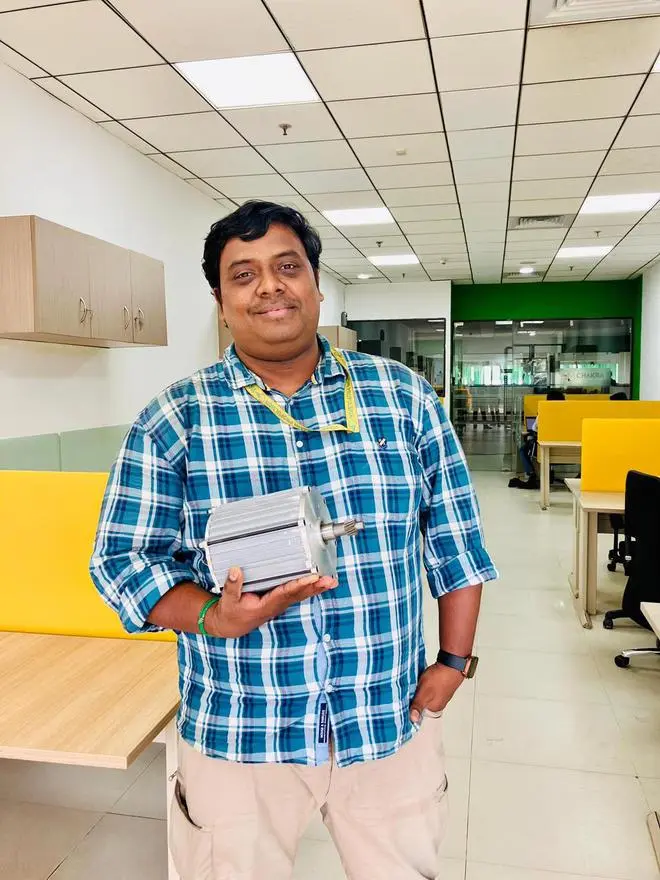April 2, 2025 — Bhaktha Keshavachar remembers it all too well. “That was the day President Trump slapped import duties on key trading partners, from Canada to China,” recalls the founder and CEO of Chara Technologies. “China retaliated by restricting exports of seven critical rare-earth materials. That single move, oddly enough, liberated us,” he laughs.
The supply squeeze sparked a new wave of hardware innovation in India. Companies such as Chara Technologies, Euler, Viridian Igni Propulsion, Conifer, and Simple Energy — which were already working on motors sans rare earth magnets — began getting more calls from customers, investors, and global partners.
The challenge
Rare earth elements such as dysprosium and samarium are integral to the manufacture of permanent magnets, especially neodymium-iron-boron magnets, which are needed to make electric motors efficient and compact.
When China added five more minerals — holmium, erbium, thulium, europium, and ytterbium — to its list of restricted exports, the alarm bells grew louder. The Chinese commerce ministry added that defence-related buyers wouldn’t be granted licences.
Bhaktha Keshavachar, Founder-CEO, Chara Technologies
“When countries accelerate electrification, any disruption in the supply of magnets, batteries, or permanent motors can stall entire industrial plans,” explains Ankita Vashishtha, Founder and Managing Partner at Arise Ventures. “When the upstream becomes the choke-point, capital naturally moves upstream. This is about national security, not just cost.”
To cope with the import disruption, the Indian EV ecosystem began to re-engineer. Ather Energy is developing motors without heavy rare earth materials; Ola Electric recently received government certification for its in-house ferrite-based design; and ABB India has launched IE5 industrial motors, which are made without rare earths.
“Rare-earth-free is not a new concept,” says Sriram Gopal, CEO of Viridian Igni Propulsion. “But until now, OEMs (original equipment manufacturers) never felt compelled to adopt it fully. Chinese magnets were abundant and cheap. The cost shock after Covid changed that.”
Back in 2018, Gopal was heading the electromagnetic team at IIT-Madras’s Centre for Battery Engineering and Electrification. “We were testing PMSM (permanent magnet synchronous motor) and BLDC (brushless DC) motors, all using Chinese magnets,” he says. When prices shot up, the team began experimenting with alternatives, leading to the founding of Viridian Igni Propulsion in 2024.
Homegrown bets
Chara Technologies, also founded in 2019, builds iron-based synchronous reluctance motors, replacing rare-earth magnets with copper windings. These motors deliver comparable efficiency but are 10–20 per cent heavier.
“Five years ago, this was a hard story to sell,” says Keshavachar. “Investors, employees, customers, everyone thought rare-earth dependence was inevitable… no one wanted to change what already worked.”

Sriram Gopal, CEO, Viridian Igni Propulsion
Conifer, launched in 2022 by Ankit Somani, makes compact axial-flux motors using ferrite magnets, which are 20 times cheaper than rare-earth variants. “We match the efficiency and power density of rare-earth-based motors,” says Somani. “The key is precision engineering and thermal management.”
As for Simple Energy, its co-founder Shreshth Mishra says the e-scooter maker was building motors when the Chinese ban struck. “We decided to test magnets without heavy rare-earth materials, and we hit performance parity faster than expected,” he says.
Simple began trials in March, secured homologation by July 15, and went straight into production. “Today, the 2,500 vehicles we build each month use heavy-rare-earth-free magnets,” Mishra says.
The money
Investors such as Arkam Ventures, Kalaari Capital, and Speciale Invest are funding startups building rare-earth-free motors. Since 2019, the sector has attracted more than $218.36 million funding, according to Tracxn.
Chara has over 70 clients, including OEMs in Italy and Belgium. From 500 motors a month currently, its Bengaluru facility aims to produce 2,000 shortly. “Since April, our revenues have jumped almost fivefold,” says Keshavachar.
With global peers such as Yasa and Magnax still using expensive rare-earth magnets, there’s a demand for mass-produced motors that are easy to source and package, says Somani. “That’s the white space India can own,” he adds.
Viridian targets making 10,000 units by FY27, while Conifer is lining up pilot programmes with EV OEMs.
Venture capital, says Vashishtha, will back startups that have developed a process that can be replicated across plants.
Can industry completely move away from rare-earth motors? No, say insiders. Rare earths remain critical for high-precision applications such as medical devices and defence equipment.
To cut import dependence, the government is working on a ₹7,300-crore incentive scheme for magnet manufacturing in India, while also urging automakers to invest in developing alternatives to rare earth magnets. Keshavachar says the solution to the supply shortage is three-fold: building domestic mining and extraction capabilities; advancing research on non-rare-earth magnets; and developing alternative motor technologies like reluctance and externally excited synchronous designs.
China’s dominance, he notes, is no accident. Deng Xiaoping famously said in 1992: “The Middle East has oil; China has rare earths.” Now, as global supply lines shift, India needs to reinvent the ecosystem that once powered its software exports to catalyse a new manufacturing story — one built not on rare earths, but on resourceful engineering.
More Like This
Published on November 10, 2025










